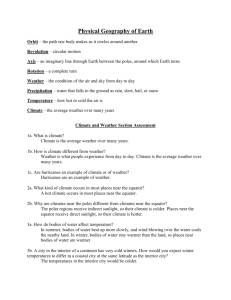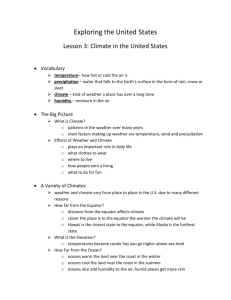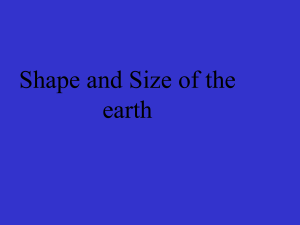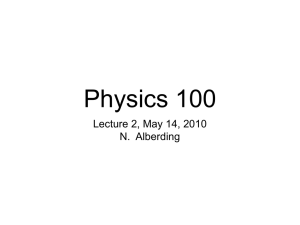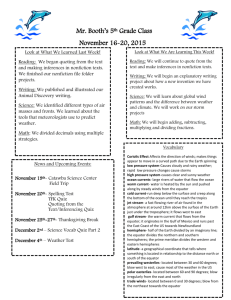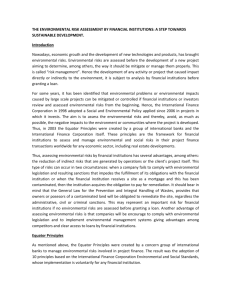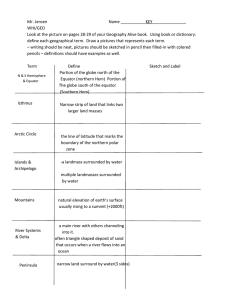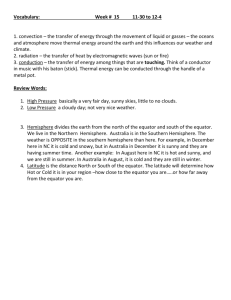Unit 7 - Water Cycle and Climate
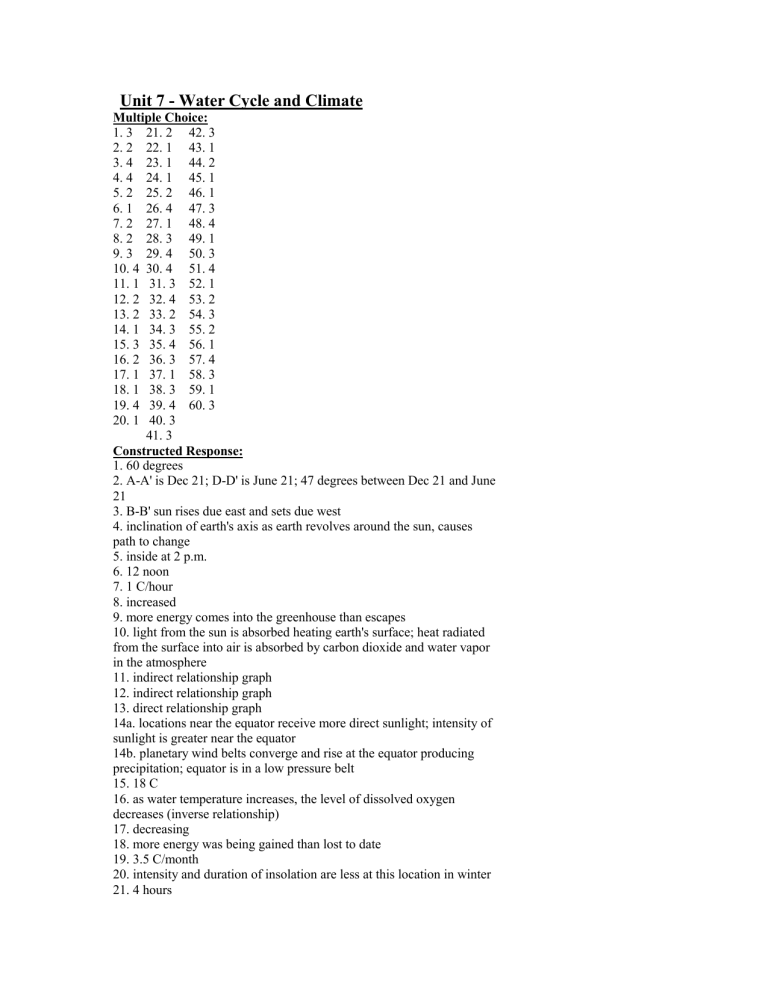
Unit 7 - Water Cycle and Climate
Multiple Choice:
1. 3 21. 2 42. 3
2. 2 22. 1 43. 1
3. 4 23. 1 44. 2
4. 4 24. 1 45. 1
5. 2 25. 2 46. 1
6. 1 26. 4 47. 3
7. 2 27. 1 48. 4
8. 2 28. 3 49. 1
9. 3 29. 4 50. 3
10. 4 30. 4 51. 4
11. 1 31. 3 52. 1
12. 2 32. 4 53. 2
13. 2 33. 2 54. 3
14. 1 34. 3 55. 2
15. 3 35. 4 56. 1
16. 2 36. 3 57. 4
17. 1 37. 1 58. 3
18. 1 38. 3 59. 1
19. 4 39. 4 60. 3
20. 1 40. 3
41. 3
Constructed Response:
1. 60 degrees
2. A-A' is Dec 21; D-D' is June 21; 47 degrees between Dec 21 and June
21
3. B-B' sun rises due east and sets due west
4. inclination of earth's axis as earth revolves around the sun, causes path to change
5. inside at 2 p.m.
6. 12 noon
7. 1 C/hour
8. increased
9. more energy comes into the greenhouse than escapes
10. light from the sun is absorbed heating earth's surface; heat radiated from the surface into air is absorbed by carbon dioxide and water vapor in the atmosphere
11. indirect relationship graph
12. indirect relationship graph
13. direct relationship graph
14a. locations near the equator receive more direct sunlight; intensity of sunlight is greater near the equator
14b. planetary wind belts converge and rise at the equator producing precipitation; equator is in a low pressure belt
15. 18 C
16. as water temperature increases, the level of dissolved oxygen decreases (inverse relationship)
17. decreasing
18. more energy was being gained than lost to date
19. 3.5 C/month
20. intensity and duration of insolation are less at this location in winter
21. 4 hours
22. rainfall approximately 23 mm/hr; discharge 0.03 cubic meters/sec
23. it takes time for water to run off land into the stream
24. greater runoff in urban area because paved surfaces prevent water from infiltrating the ground
25. increase because infiltration from the first rainstorm decreased the storage space for additional water in the ground
